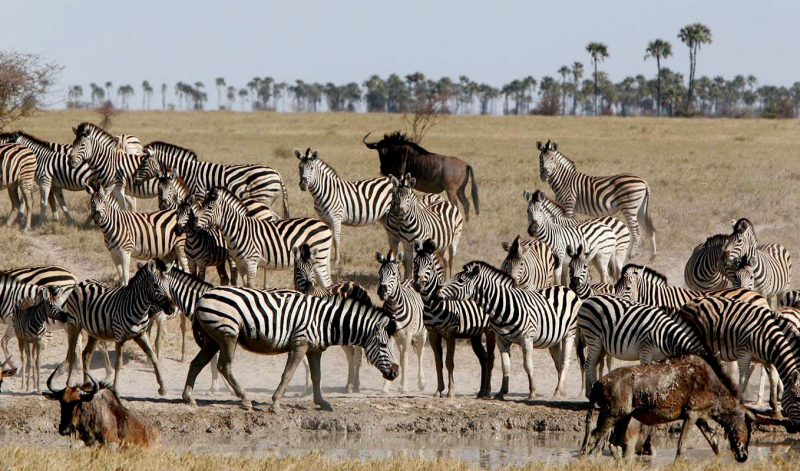The Zebra Migration

Wildlife migrations are breathtaking natural phenomena that used to occur all over the world. However, with the spread of Homo sapiens, particularly urban areas and fences, many routes have been cut off, and only a few truly large animal migrations remain. Animal movements in Botswana have long been documented: anecdotally, much of the wildlife, including zebras, wildebeest, buffalo, and elephants, moves seasonally. Many of these animals appear to spend the dry months near the river systems - the Chobe, the Kwando-Linyanti, and the Okavango - and then migrate into the vast vegetated sand-sheet of the Kalahari for the wet months.
Thousands of zebras migrate through the Makgadikgadi Pans during November, when the rains begin, making it Africa's second-largest mass movement of animals. The sight of migrating zebras is always stunning, with the surrounding scenery ideal for photography. The zebra migration is arguably Botswana's best-kept secret, as few people are aware of it. However, you should go to Botswana and watch as these beautiful animals move in search of lush vegetation, with lions and hyenas stalking them and ready to devour them.
One significant advantage of witnessing the zebra migrations is that they are most dramatic during Botswana's low tourism season, which means lower lodge rates and fewer safari vehicles. However, driving can be difficult, if not impossible, during the rainy season. The Boteti River, on the western edge of Makgadikgadi Pans National Park, is one of the area's only permanent water sources for thirsty zebras, which means that large concentrations of zebra can be found there as herds move in and out of the Pans area.











